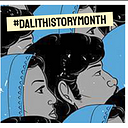“The Sea has no Caste” — Kayal Sammelanam
by Ashwini KP
Today in #DalitHistory, we celebrate the Kayal Sammelanam, or the Backwater Conference, events that revolutionised anti-caste movement in Kerala.
The first half of the 20th century Kerala saw a wave of anti-caste struggles with initiatives like the right to upper-cloth movement, movements for educational rights, land rights struggles and many others were being organised. The most important was the aspect of self-dignity and equality that stood out in these movements.
It is important to remember that social stratification and discrimination based on caste were at its extreme in Kerala. Slavery was rampant. Terming the Dalits as untouchables, unapproachable or even unseeable, the condition of Dalits in the state of Kerala was most deplorable. With no access to land or livelihood, the Dalit communities were subjected to the worst forms of discrimination and exclusion.
Among the series of mass campaign and anti-caste struggle that took place in the first half of the 20th century, the Kayal Sammelanam was one of the most prominent. Also famously known as the Meeting on the Backwaters, this movement was organised the Pulaya (untouchable) community of Cochin.
Krishnethi Asan, one of the leaders of the Pulaya community, first expressed his interest to organise a meeting for the Pulayas. Along with K.P. Karuppan, another Bahujan anti-caste leader and writer, he planned to establish an organisation for the Pulayas. Untouchable communities were often denied space to organise meetings at that time. Dalits of Cochin were banned from attempting to gather anywhere in the land. Unbending to the societal pressures, Karuppan and Krishnethi decided to conduct the meeting directly on Kerala’s famous backwaters. People came on small boats to a particular point on the backwaters and tied their boats together. On 21st April 1913, a Kayal Sammelanam was held with hundreds of Pulaya and other caste-oppressed communities gathering from places like Mulavukadu, Panambukadu, and Vaduthala. Even family members of the great Dalit leader Dakshyani Velayudhan were present. They organised a mass assembly with huge numbers gathered on small boats on the water. A huge wooden raft was used to make a platform for the programme. Inspired by this gathering, Dakshyani is said to have asked that her biography, whenever it would come out, be named — “The Sea has No Caste”.
The outcome of the Kayal Sammelanam was significant due to the mobilisation of the Pulaya and other Backward communities across the region. The Kayal Sammelanam led to a series of similar meeting in Cochin backwaters. The first Pulaya conference was held in May 1913 at Ernakulam as a result of the decisions taken at Kayal Sammelanam. There, they unanimously decided to prepare and submit a petition to the government authorities and the then King Rama Varma. The petition included demands like access to public places without any restriction based on caste and creed, educational rights for untouchables, technical educational institutions for the untouchable communities. It is said that the petition was received on a positive note by the King.
The most significant outcome of the Kayal Sammelanam was the formation of Cochin Pulaya Mahasabha. The Pulaya Mahasabha gave an institutional platform to the Pulayas in Kerala. The movement also resulted in political transformation and constitutional reforms. Leaders from marginalised communities became political representatives thereby voicing their concern for the empowerment of untouchable communities.
Kayal Sammelanam in many ways was the dawn of an organised Dalit movement in Kerala. Apart from organising the untouchable and other backward communities, Kayal Sammelanam laid a foundation for a robust Dalit movement that transformed the socio-economic and political structure in Kerala.
Today we remember the legacy of the Pulaya community and all the leaders who immensely contributed to the empowerment of Dalits in Kerala. We salute the members of Kayal Sammelanam who dared to question and resist caste and exclusion. We honour the fact that when not being given space on land to meet, people found a place on water, to not only meet but to organise revolution.
This post was written for Dalit History Month by Ashwini KP. Ashwini is a researcher and works on issues related to human rights, Dalit women, caste and social exclusion. You can reach her at ashwini.kp16@gmail.com
Sources
*Vinayan MC, Subaltern Mobilization and Resistance: A Historical Exploration of Pulayas, the Untouchables of erstwhile Cochin, Volume 22, Issue 10, Ver. VII (October. 2017) PP 28–36, IOSR Journal Of Humanities And Social Science (IOSR-JHSS).
*Vinayan MC, Dalit social situation and Lincoln of Kerala: A page from the Subaltern History of erstwhile Cochin, Volume 6 Issue 10||October. 2017 || PP.09–14, International Journal of Humanities and Social Science Invention.
*Charmy Harikrishnan, How Dakshayani Velayudhab broke the iron ceiling of caste to become the only Dalit women in Constituent Assembly, The Economic Times, 15 August 2017.
